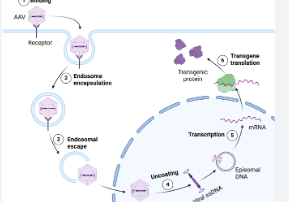RNA Editing Revolutionizes Genetic Disorder Treatments
Wave Life Sciences, a Massachusetts biotechnology firm, made headlines. They became the first company to treat a genetic condition using RNA editing in clinical trials. This milestone marks the growing significance of RNA in medicine, especially following the success of mRNA vaccines during the COVID-19 pandemic.
About RNA Editing
RNA editing is a process that corrects mistakes in messenger RNA (mRNA) after its synthesis from DNA. Cells use mRNA to produce proteins. Errors in mRNA can lead to faulty proteins, causing various disorders. RNA editing fixes these errors before the mRNA is translated into proteins.
How RNA Editing Works
One key method involves adenosine deaminase acting on RNA (ADAR) enzymes. These enzymes convert adenosine, a building block of RNA, into inosine. Inosine behaves like guanosine, another RNA building block. This conversion tricks the cell into correcting the mRNA, allowing it to produce functional proteins.
Guide RNA and Targeting
Scientists pair ADAR with guide RNA (gRNA) to target specific mRNA sequences. The gRNA directs ADAR to the precise location needing correction. This technique aims to treat various genetic conditions by addressing single-point mutations in mRNA.
Wave Life Sciences and AATD
Wave Life Sciences is using RNA editing to treat α-1 antitrypsin deficiency (AATD), a genetic disorder affecting protein levels in the liver and lungs. Their therapy, WVE-006, targets specific mutations in the SERPINA1 gene, restoring normal protein production. This approach could replace current treatments, such as weekly intravenous therapy or liver transplants.
Future Applications
Wave Life Sciences plans to extend RNA editing to treat Huntington’s disease, Duchenne muscular dystrophy, and obesity. These conditions often involve single-point mutations, making them suitable for RNA editing. Other companies, such as Korro Bio and Proor Therapeutics, are also exploring RNA editing for various diseases.
Advancements in RNA Editing
Researchers are expanding RNA editing techniques to modify exons, the coding regions of mRNA. Ascidian Therapeutics is testing RNA editing for ABCA4 retinopathy, a genetic eye condition. This condition involves multiple mutations, making traditional gene replacement therapy impractical.
RNA vs DNA Editing
RNA editing has advantages over DNA editing. It makes temporary changes, reducing long-term risks. If issues arise, therapy can be halted. In contrast, DNA editing creates permanent alterations that may lead to irreversible errors.
Safety Considerations
RNA editing uses ADAR enzymes, which are naturally present in the human body. This lowers the risk of immune reactions compared to DNA editing, which often relies on foreign proteins. This is particularly beneficial for patients needing repeated treatments.
Challenges in RNA Editing
Specificity is a major challenge in RNA editing. ADARs can affect unintended parts of the mRNA or miss the target. Researchers are working to improve the accuracy of gRNA to minimise side effects. The transient nature of RNA editing also means patients may require ongoing treatments.
Delivery Methods
Current delivery methods for the gRNA-ADAR complex rely on lipid nanoparticles. While effective, these methods have limited capacity for transporting larger molecules. This limitation poses challenges for delivering more complex RNA editing therapies.
RNA editing is still in its early stages, yet over 11 biotechnology companies are developing RNA editing techniques. Major pharmaceutical firms, including Eli Lilly and Roche, are showing interest. As research progresses, RNA editing may soon become a standard tool in clinical gene therapy.
Month: Current Affairs - November, 2024
Category: Science & Technology Current Affairs


